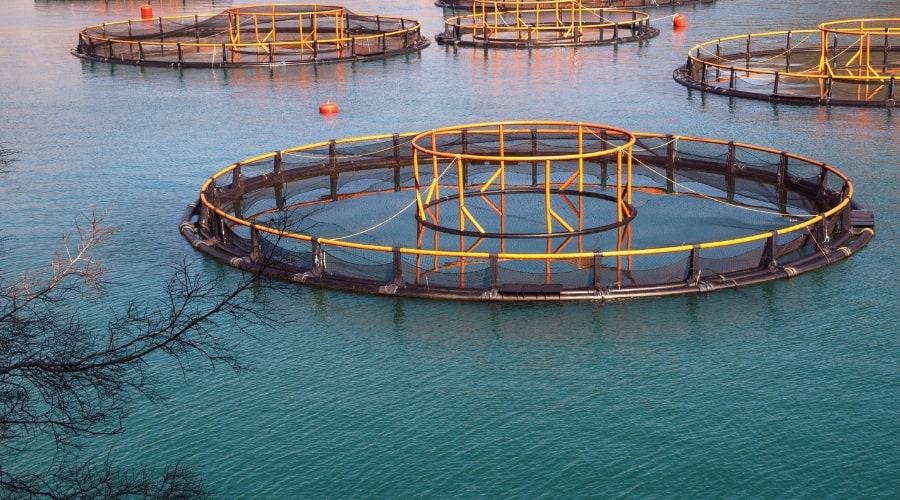When starting your fish farming journey, choosing the right farming system is critical. Each system has unique benefits and challenges. Let’s explore pond, cage, and tank farming to help you make the best decision for your needs.
Pond Farming
Pond farming is one of the oldest and most widely used fish farming systems. It involves creating or using natural or artificial ponds to grow fish. This system works well for many species, including tilapia, catfish, and carp.
Advantages:
- Ponds provide a natural environment, reducing stress for the fish.
- They support a variety of fish species, making them versatile.
- Fertilization and natural feeding can reduce feed costs.
Challenges:
- Requires significant land area, which can be costly.
- Maintenance, such as preventing water pollution and algae overgrowth, is labor-intensive.
- Leaks or poor construction can lead to water loss and inefficiency.
For beginners, starting with a small pond can be a manageable option. Ensure the pond is properly lined to prevent seepage and maintain water quality by testing regularly.
Cage Farming
Cage farming uses enclosed net cages suspended in natural water bodies like lakes, rivers, or oceans. This system is growing in popularity due to its efficiency and scalability.
Advantages:
- It requires minimal land, making it accessible for those near natural water sources.
- The water current provides natural oxygenation, reducing equipment needs.
- Cage structures are often modular and easy to expand.
Challenges:
- Vulnerable to environmental factors such as storms and water pollution.
- Fish are at higher risk of diseases and parasites from surrounding water.
- Local regulations may restrict cage farming in certain areas [TO BE VERIFIED].
Before opting for cage farming, research your local regulations and assess the water quality of the site. Durable, high-quality cages can help minimize losses due to environmental conditions.
Tank Farming
Tank farming, or recirculating aquaculture systems (RAS), involves growing fish in tanks with controlled water conditions. This system is particularly suitable for urban or small-scale farming.
Advantages:
- Offers precise control over water quality, temperature, and feeding schedules.
- Can be set up in almost any location, even indoors.
- Requires less water compared to ponds and cages.
Challenges:
- High initial setup costs due to equipment and technology.
- Energy-intensive, especially for filtration and aeration systems.
- Regular monitoring and maintenance demand time and technical knowledge.
If you choose tank farming, start small and focus on mastering water quality management. Automated systems can simplify operations but require an upfront investment.
Choosing the Right System
To decide which system is best for you, consider these factors:
- Available Space: Large open areas suit pond farming, while limited space works better for tanks.
- Budget: Cage and tank systems may have higher startup costs than ponds but can be more efficient long-term.
- Target Species: Some fish thrive better in specific systems; research compatibility.
- Regulations: Check local rules regarding environmental impact and site usage.
- Long-term Goals: If scalability is a priority, tank or cage farming might align better with your vision.
By weighing these factors, you can choose a system that fits your resources, goals, and local conditions. Each method has its strengths, and starting with a system that matches your situation increases your chances of success.
Take the time to plan, experiment, and learn as you grow your fish farming business. The right start makes all the difference.


